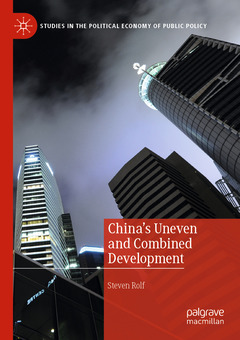Description
China’s Uneven and Combined Development, 1st ed. 2021
Studies in the Political Economy of Public Policy Series
Author: Rolf Steven
Language: English
Subjects for China’s Uneven and Combined Development:
Publication date: 10-2021
264 p. · 14.8x21 cm · Paperback
Publication date: 10-2020
264 p. · 14.8x21 cm · Hardback
Description
/li>Contents
/li>Biography
/li>Comment
/li>
Chapter 1: Introduction: China shakes the world-system.- Chapter 2: Uneven and combined development and the capitalist states-system.- Chapter 3: From varieties of capitalism to uneven and combined development: a new perspective.- Chapter 4: China’s boom (I): The geopolitical economy of reform and opening, 1978-2000.- Chapter 5: China’s boom (II): Making the ‘leap’, 2001-2008.- Chapter 6: The ‘rebalancing’ fallacy: 2008 and its aftermath.- Chapter 7: The state resurgent.- Chapter 8: Conclusion: China cracks the whip: The externalisation of China’s political economy




